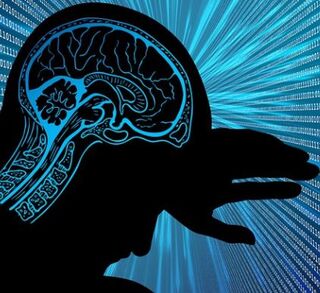Addiction
Addiction: 'All I Do Is Think of You'
Addicted individuals must constantly monitor themselves for withdrawal symptoms.
Posted October 20, 2021 Reviewed by Jessica Schrader
Key points
- The brain tends to follow a predictable pattern of changes due to addictive drugs.
- The unnatural cycle of dopamine surge and depletion can cause the addicted brain to lose its ability to experience pleasure.
- Many addicted individuals must constantly monitor themselves for the physical and mental symptoms of withdrawal.

However long it takes for a person to fall into the heavy use of alcohol or other addictive drugs—weeks, months, years—the brain begins to change itself. These changes, which last long after drug use stops, enable the brain to adapt to frequent exposure to toxic chemicals.
Although the molecular and cellular details differ depending on the individual drug, the transformation of the brain tends to follow a predictable pattern:
- To cope with the increasing levels of dopamine caused by alcohol and other drugs, the brain undergoes molecular and cellular changes to produce less of its own dopamine.
- With lower-than-normal levels of naturally occurring dopamine, the baseline mood of drug users declines.
- As it becomes harder to find pleasure in everyday experience, addicted individuals depend more and more on drugs to raise their dopamine levels and make feelings of pleasure possible.
- Dependence leads to tolerance, as more and more drugs produce less and less effect.
Trapped in an unnatural cycle of dopamine surge and depletion, the addicted brain may lose its ability to experience pleasure altogether. At this point, addicted individuals use drugs not to feel good but to feel normal—to escape, however briefly, the extreme nervousness of uncontrollable craving. Eventually even normal is a distant memory.
The unsatisfied craving of the addicted brain creates a pathological preoccupation with drugs, and the mind begins to play a circular tape. Do I have enough alcohol to get through the day? When do I need to use again? How can I get this guy out of my office in time for my next drink?
The addict’s obsession is exacerbated by the urgency of finding and paying for drugs, and the need to keep them both concealed and close at hand. One of my patients hid her bottles behind her law books. Another buried a month’s supply of marijuana in his yard. A retired patient filled his garden hose with alcohol so that he could keep drinking while he sat in his lawn chair.
For people addicted to illegal drugs or prescription pills, supply problems can consume almost every waking hour. If their money runs out and withdrawal begins, the combination of unbearable agitation and impaired judgment may lead to otherwise unthinkable behavior—dealing, stealing from family members, prostitution, embezzlement, robbery, and so on.
While maintaining their drug supply, addicted individuals must also constantly monitor themselves for the physical and mental symptoms of withdrawal. At the slightest sign that they are heading toward the dreaded state of dope sickness, their incessant rumination kicks into overdrive.
“When I woke up from a bender with cocaine and alcohol, I felt like I was in a dense jungle of turmoil and pain,” remembers my coauthor James. “On the other side of the jungle were the drugs I needed, and I would kick and crawl, and do virtually anything necessary to get to them.”
As his addiction progressed, James found himself crashing faster than he could drink or use cocaine. “In the end, I couldn’t get high at all,” he says. “I was using and coming down at the same time.”
In a state of perpetual withdrawal, James was compulsively using chemical substances he no longer liked or even wanted. He was responding, on one level rationally, to the emergency message from his dopamine-depleted brain. Alcohol and cocaine are as essential to your life as eating and drinking, and you will die without them. This relentless SOS was a neurological misfire for which he knew only one solution: use more drugs.
With his brain in a chronic state of red alert that no drugs could medicate, James’ behavior deteriorated in predictable ways, creating a constellation of symptoms that are the hallmark of uncontrollable craving. These include rationalization and projection, mood swings and personality changes, deteriorating relationships, decline in work performance, and legal problems.


